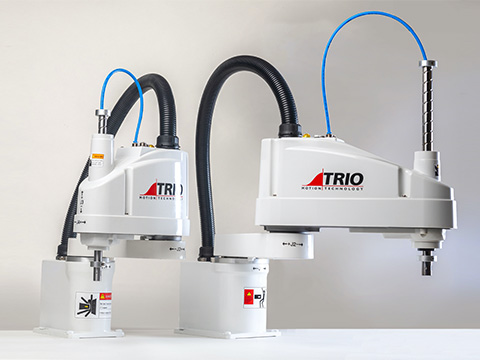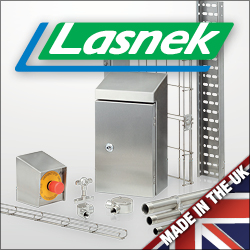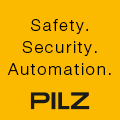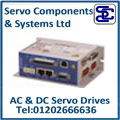
Posted to News on 21st Sep 2022, 12:15
Optimising SCARA integration for improved performance

Integrating a controller that manages a machine and robots can mean faster development and greater reliability compared to connecting a separate robot controller to the machine’s PLC, says Tom Alexander, president of Trio.
The benefit of introducing SCARA (selective compliance assembly robot arm) technology to a machine process is an increase in throughput and precision, leading to higher productivity and quality. Typically including four axes of movement and able to lift around 20kg, a SCARA robot adds dexterity to applications such as pick and place for manufacturing assembly. SCARA can also reduce machine complexity, achieving motion paths that would otherwise require additional mechanical hardware, development time, and cost, to achieve.
At the same, the perception of difficulty in establishing communication between a machine and its robots can be a barrier to introducing SCARA technology. As most PLCs don’t include integrated robot control, a separate controller provided by the robot manufacturer is usually required to manage the robot path planner.
“This presents a challenge for engineers because it creates two distinct development environments,” says Trio Motion Technology’s president, Tom Alexander. “It means that you need to establish an interface method between the machine and robot. This can take a long time to achieve, and it might have to be repeated for each new design.”
Interfacing a PLC and robot controller
For many PLC engineers, a robot controller is a separate field of expertise. As a result, the machine builder has to either recruit robot developers, or they have to rely on the robot provider for commissioning support. Whichever way it’s achieved, it means an additional system for the OEM to maintain.
Issues in handshaking between the robot and machine not only impact OEM development but can also extend to the machine end user. Challenges in reliability can arise out of production changes, resulting in a less stable and less flexible machine.
“Separate, individual vendor-managed environments can make responsibility for resolving inevitable issues more difficult to establish, and it also places increased reliance on a third-party,” says Tom. “Typically, this results in more downtime for the machine user and demands excessive support resource from the machine builder.”
The extra hardware requirement for the dual environment approach can also impact bottom line finance. “Perhaps the most significant challenge to machine design when interfacing a PLC with a robot, is cost,” adds Tom. “This approach means two distinct controllers to procure – or more if the application requires more than one SCARA – and extra hardware such as an encoder is also generally needed for a PLC and robot controller to synchronise.”
Integrating a machine and robots
Instead, Trio’s approach uses a single, motion-centric controller that includes robotic kinematic control as well as IEC programming of logic functions. This means coordination of the machine cycle, all motion axes, and robots, in one development environment.
“A single controller for a machine and robots ensures true integration,” says Tom. “This removes the potential of communication issues, dramatically speeding up machine development time. This approach also eliminates handshaking problems for the end user, not only meaning a more reliable system, but making production changes faster and simpler to achieve in the real world.”
Motion-centric control has been Trio’s primary focus since the company’s inception over 30 years ago. The basis of motion coordination, including the synchronisation of multiple axes across multiple dimensions, are characteristics that are also central to robot control, hence a shared path of development at the company. The UK automation manufacturer first added elements of robot control within its motion coordinator range in 1995.
Since then, Trio has released the Robot Programming System that controls Cartesian and Delta robots, as well as SCARA, and last year launched its own range of SCARA robots. As Trio controllers include the option of IEC language programming for logic functions, as well as scalable I/O extension, they can also handle many applications typically assigned to PLCs.
Faster development and improved reliability
In real world use cases, Trio’s integrated machine and SCARA system has been deployed on applications ranging from lithium battery production to bottling lines in pharmaceutical packaging. Recently in India, with a material handling application for the transfer of die tooling at a furnace, the integrated approach doubled the amount of machine cycles completed per minute compared to the incumbent PLC and robot vendors, thanks to the simplicity in communication of the single environment. Most significantly, project development time for the OEM dropped from an average of three months down to two weeks.
“The OEM was able to develop the solution with just a single engineer, where previously they required expertise for a PLC and a separate robot controller,” says Tom. “The solution was less expensive overall because of a reduced hardware requirement, and their customer is benefitting from a more reliable, easier to use system.”
Within the single development environment, it’s also possible to integrate vision systems via Trio’s motion and PC solution where third-party cameras can be connected through an API library. In a typical pick and place conveyor application, a SCARA provides conveyor tracking via an encoder, and when the object passes below the camera, its position and orientation is communicated to the SCARA that will then pick the object and rotate or change its position accordingly.
“Robot vendors typically charge a premium for camera and additional axis integration, so the ability to coordinate vision within a single system is another benefit,” says Tom.
Trio’s development is supported by Estun, China’s largest home-grown robot manufacturer. The decision to acquire Trio in 2017 was a result of the UK brand’s market share of machine controllers used within electronic device manufacturing machines in China. This is also a sector where Estun’s robots are heavily used and, combining Estun’s robot expertise in support, Trio’s SCARA development has taken place at the company’s Gloucestershire HQ.
“Some applications with a very heavy reliance on logic might benefit from traditional PLC and robot interfacing,” says Tom. “But for many OEMs, integrating machine and robot coordination is a superior approach.”


















